Workation » Best Workation Locations and Why You Should Visit Them » Italy Workation – Working and Vacationing in Italy » Things to do in Italy during Workation » October, November, and December Festivals in Italy
October, November, and December Festivals in Italy
October Festivals in Italy
Feast Day for Saint Petronius
October 4th – Bologna, the capital of Emilia-Romagna, venerates its patron Saint Petronius while the rest of Italy commemorates the life and times of St. Francis of Assisi. St. Petronius was a bishop during the decline of the Roman Empire in the 5th century. Shops and banks close, along with schools. People of Bologna enjoy the restaurants, cafes, and public squares throughout the day in celebration of their patron saint. Food stalls set up in Piazza Maggiore.
The archbishop holds a midmorning service in the basilica. The church stood as a symbol of the city’s liberty during the 14th century and a place in which to give thanks to the blessings bestowed upon Bologna by Saint Petronius. His important legacy includes charitable work for the city’s poorest and attention to urban planning and housing construction during the hard years between the decline of Rome and Bologna’s rise as a proud City-State. The festival is both religious and civic, with the morning mass giving way to a short procession leading between St. Peter’s to St. Petronius’.
Concerts and street theater take place across the historic city center. Fireworks fill the night sky between 10 and 11pm. The larger museums in the city remain open during the celebration and intercity transportation, i.e. trains between Bologna and Rome or Bologna and Venice, are not disturbed.
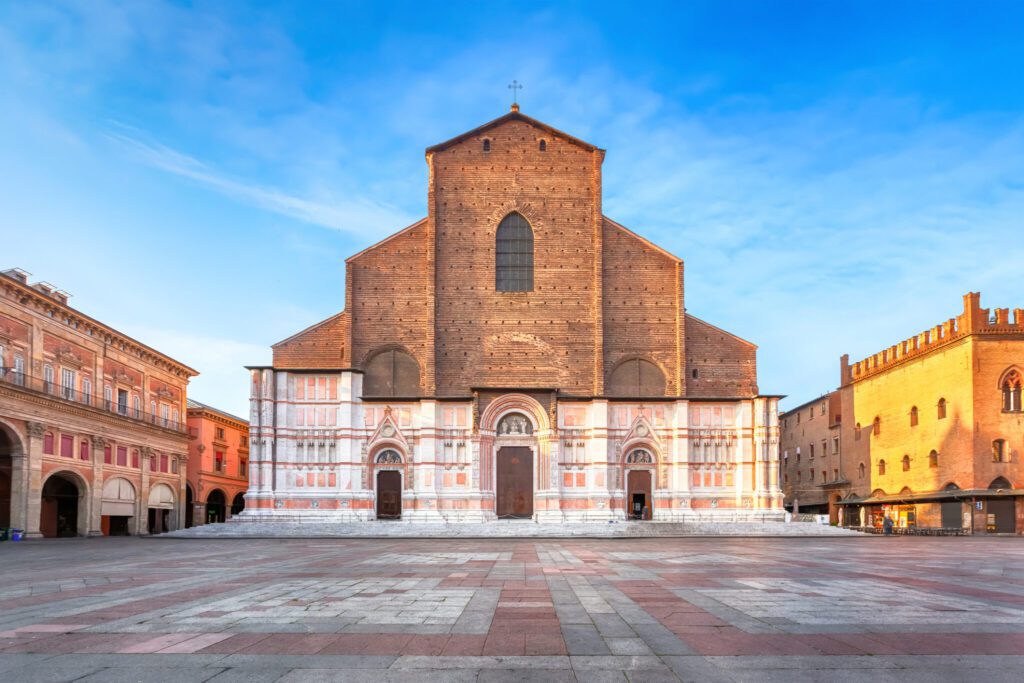
Maschera di Ferro
First Weekend in October – The legend of the Man in the Iron Mask has permeated culture in Western Europe, including the life and times of Italy’s Piedmont region and the town of Pinerolo. The French occupied the town sporadically between the 14th and 17th centuries. The legend tells of a French prisoner during the reign of King Louis XIV and the unique characteristic of the ever-present mask that kept the prisoner’s face from view, leading to the famous 19th century novel by Alexandre Dumas, The Man in the Iron Mask. The town of Pinerolo celebrates the legend annually with an elaborate display of community theater.
The intriguing story begins on the medieval streets of town in the Italian Alps near the region’s capital, Turin. Participants dress in medieval costume to parade through town while music and games fill the public piazzas. Soldiers march prisoners through town, preceding the Man in the Iron Mask arriving in Piazza Vittorio Veneto. Thousands of spectators stand in the square to view the mysterious prisoner. Each year a different person plays the prisoners and locals attempt to guess who could be behind the mask.
Enzo Ferrari Memorial Marathon
October 14th – The Enzo Ferrari Memorial Marathon is also referred to in Italy as the “Italian Marathon,” since its inauguration in 1988. The route travels from Maranello in Emilia-Romagna to the Renaissance town of Carpi. The Museo Ferrari marks the starting point for the marathon, half marathon, and 30 km races. The half marathon ends at the Park Ferrari in Modena after 13 miles.
The streets close to traffic from private automobiles and bikes, with only pace cars, film, and emergency vehicles allowed on the course during the race. Accommodation around Modena and Maranello become scarce before the race with participants eager to spend the night close to the starting line. Transpiration is not affected throughout Italy but bus routes may vary in Emilia-Romagna due to roads closing for the event. If you are driving through Italy, be aware of the closed roads in Emilia-Romagna between Maraneloo and Carpi.
White Truffle Festival (Fiera Internazionale del Tartufo Bianco d’Alba)
Early October to early November 18th – The cuisine of Italy is famous for its balanced flavors and rustic properties, along with the elite ingredient of the white truffle, which draws culinary enthusiasts from around the world to the region of Piedmont and the town of Alba. The first festival was held in 1930 and each year, the small mountain town in northern Italy continues to hold one of the best truffle fairs and markets. Concerts initiate the beginning of the festival and foot stands fill the city with the earthy aromas of fresh truffles picked from the surrounding countryside.
Events such as donkey races and food tastings keep foodies, children, and the sporadic tourist interested in the fun activities. Local restaurants join in the celebration by providing seasonal dishes showcasing the autumn and the robust flavor of the white truffle. The end of the proceedings come in the form of the truffle world auction and a white truffle walk, during which tourists can search the forest for any lingering bundles of the coveted ingredient. The dates vary from year to year but the festival always takes place between October and November.
The white truffle is an integral part of Italian cuisine in particular regions. Piedmont and Alba provide one of the most famous festivals in celebration of the delectable ingredient, but it is by no means the only celebration. The following is a list to help guide you to other white truffle markets and festivals across Italy that may better suit your timing and destinations:
Tuscany
- San Miniato Truffle Fair is held on the second, third, and fourth weekends of November
- San Giovanni d’Asso has their festival on the second and third weekends of November. The truffle museum is open only on the weekends.
- Volterra celebrates the white truffle in late October and early November
Le Marche
- Acqualagna hosts a white truffle festival on weekends beginning the end of October and running through mid-November
- Sant’Angel in Vado enjoy the festival for several weeks in October
Umbria
- Pietralunga holds a trade fair in truffles in mid-October
- Citta di Castello has a fair dedicated to white truffles and forest products in November
Emilia-Romagna
- Bobbio enjoys a mushroom and truffle celebration on the first weekend of October
- Savigno comes to life on the first three Sundays in November with a white truffle festival
- Sasso Marconi has a truffle festival and historical pageant during the first weekend of November
- Calestano makes its own path with a black truffle fair held every Sunday in mid-October to mid-November
Molise
- San Pietro Avellana proves its name as the “Home of the White Truffle” with a market on the first weekend of November

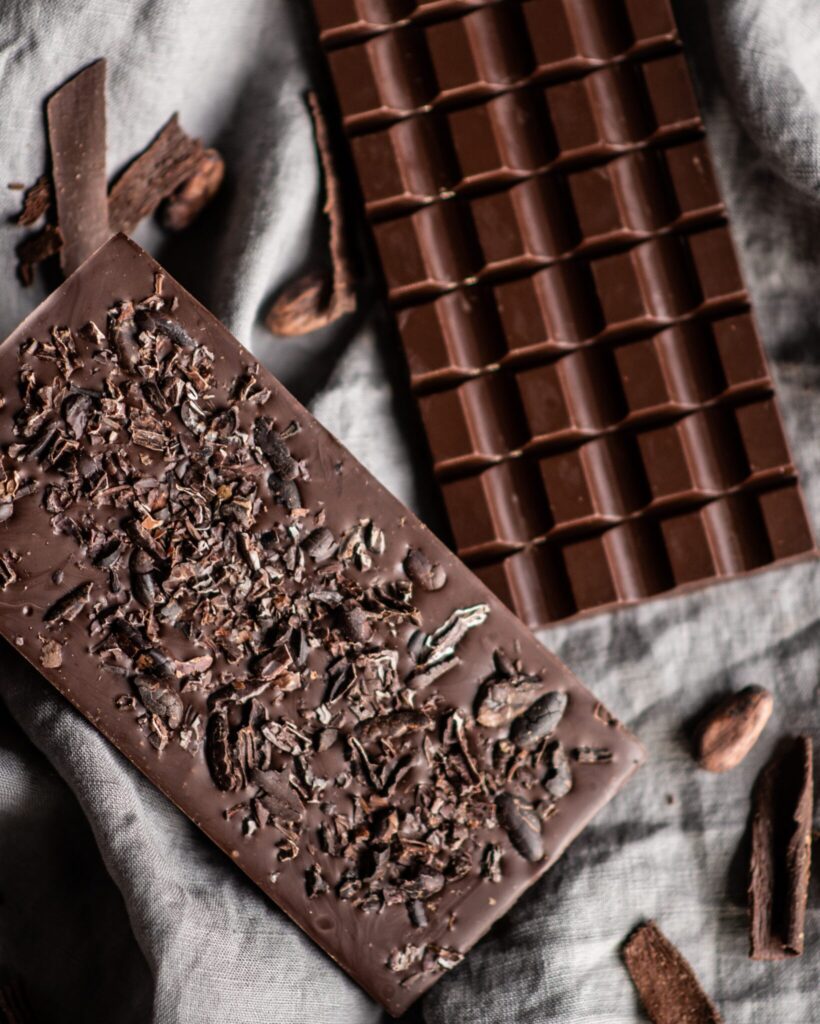
EuroChocolate
10 days in October – The annual chocolate festival of the city of Perugia, in the region of Umbria, celebrates modern food with historical roots. The delicious event takes place every October and overtakes the whole of Perugia’s historic city center. Each year the governing body offers a chocolate themed initiative, which in the past have included Eurochocolate World, Choco Island, Pepper, and Spalm Beach. The latter provided information on a range of chocolate spreads.
Seminars and meetings offer detailed insight on intricate chocolate focuses, such as how to properly pair chocolate and wine, or programs meant to train parties interested in working in the culinary industry, marketing, or food retail. The event sees approximately 300,000 visitors a year, along with more than 50 tons of chocolate featured in the stalls, cafes, restaurants, theaters, and workshops across the city. Nutritionists offer lectures with specific details about the virtues and downfalls of the confection while artists sculpt over 2.2 thousand pounds of chocolate blocks into clean, captivating statues.
Staff catch the falling shavings on clean sheet pans before offering them to the crowd for an interactive experience with the art. The festival can be overwhelming to newcomers unfamiliar with the grand scale and endless displays of edible and artistic chocolate. The best place to start is in Piazza Italia. The Chocotram connects the city’s main piazzas every hour. The tram also contains chocolates and treats for passengers. The event has enough unique activities and fascinating flavors for ardent chocolate lovers and the casual chocolate eater to enjoy.
Feast Day for Saint Saturnino
October 30th – Sardinia can feel like a world apart from the mainland of Italy on its secluded island shores but during the Feast Day of Saint Saturnino, the traditions of devotion connect the main city of Cagliari with the customs of the predominantly Catholic nation. The patron saint of the city was martyred in the early 4th century by order of governor Barbarus. Legend states Saturnino was beheaded for refusing to offer sacrifices to Jupiter while the local government persecuted fellow Christians. The main basilica is dedicated to the saint and continues to draw devoted citizens of the island to its altar to honor past pieties and performances.
Scholars first mentioned the basilica in the year 600. The grounds were restored in the late 15th century. Locals of Cagliari attend mass and a small procession travels through the city streets. The festivities showcase a tiny part of life on the Italian island and its customs associated and far removed from those of the mainland. Public transportation is not affected and shops, restaurants, and cafes keep their normal hours. Schools close allowing families to enjoy the day together inside the public piazzas or a day traveling around the island.
Halloween
October 31st – The spooky, costume celebration of Halloween in the United States is a far cry from the distinctive customs of Italy on All Saints Eve. Costume parties have become popular over the last decade and half with friends throwing intimate gatherings of people dressed in unique outfits inspired by the parties from Hollywood films. Shops display decorations on their windows and children parade through towns and cities showcasing their cute or terrifying costumes before celebrating a private party.
The medieval walled town of Corinaldo, located in the region of Le Marche, has labeled itself the Italian Capital of Halloween,” by starting a weekend long festival dedicated to witches. Spooky attractions underscore the historic ambiance of the antique town. Taverns offer live music while bonfires and floating lights fill the cobbled lanes.
The town of Triora, in the Liguria region is known around Italy for its 16th century witch trials. The town holds a yearly festival on Halloween with concerts and events continuing past midnight and commemorating its ghostly past. Processions take place throughout the day and on the weekend before the holiday across Italy to commemorate All Saint’s Day.
November Festivals in Italy
All Saints Day (Ognissanti/Tutti i Santi)
November 1st – the day if I Morti in Italy is dedicated to the dead and dear ones who have passed. People begin visiting cemeteries across the country days before the official holiday to bring fresh flowers to loved ones and forgotten tombs, turning the drab landscape into a collection of bright flowers. Chrysanthemums carry a message of joy and prosperity throughout the world while in Italy the flowers hold an association of mourning due to its appearance on the Day of the Dead.
Presenting a person with a bouquet of chrysanthemums is considered a bad omen. The folk tradition of lighting your windowsill at sunset and laying a table to include a setting for the deceased member of the family remains popular in small towns and with Italians familiar with their traditions. The deceased member is said to leave green beans and confetti for the children after visiting, emphasizing the connection between generations. Everywhere in Italy vendors roast chestnuts on the first of November.
The traditional celebration of All Saints Day consists of a mass proceeding the small procession to the cemetery. Often times priest will lead the mass directly at the cemetery. In the northern regions of Piedmont and Liguria locals eat a soup of chickpeas, celery, carrots, onions, tomatoes, and pork ribs. In Sicily, bakeries prepare a sweet confection made from Martorana fruit. The dessert is similar to marzipan but has a sweeter flavor made from ground almonds and sugar.

Feast Day for Saint Giusto
November 3rd – The eastern city of Trieste, capital of the Friuli-Venezia Giulia region, honors their patron, Saint Giusto annually on the third of November. The saint lived in Tergesteo, which was the Roman name for Trieste. The Roman citizen and Christian refused to make a sacrifice to the Roman gods and was executed by drowning. Folklore dictates the saint’s friend Giusto washed ashore on the banks of the Riva Grumula. In medieval times devout followers of the saint moved the body to the Duomo.
A bronze statue of the saint sits nearly 30 feet below the water near the cliffs of the Trieste, visible in the clear Adriatic Sea. Each year since 2013 the Circolo Sommozzatori Trieste, a local scuba club, recovers, repairs, and cleans the statue. The statue is placed inside a large tube and filled with water before being put on display in the Cathedral of San Giusto before the effigy returns to its place in the sea.
Florence Marathon
November 25th – Late November is the perfect time to run through Florence and the hills of Tuscany during the annual marathon event. Over 10,200 runners participated in the event in 2010, and the numbers continue to grow, making it the second largest Italian marathon behind only the Rome City Marathon. The race has grown to one of the 20 most prominent marathons in the world. The epic run began in 1984 as an international competition with an inaugural 462 runners.
The contemporary course begins at Lungarno Pecori Giraldi and finishes in Piazza Santa Croce, in front of the eponymous basilica. Participants run past historical monuments dating back to the 13th century including Piazza della Signoria and the Ponte Vecchio. Predominantly representatives of France, Germany, and the United Kingdom accompany a bulk of Italian runners with both men and women participating. The event begins at 8.30 in the morning and offers runners six hours to complete the route. The lack of incline and clean streets provide an easy and fast track for runners to follow.
The streets in the historic city center close to traffic until the late afternoon. Local buses change routes due to the winding nature of the race but intercity buses and trains are not affected. The disruption to banks, shops, and restaurants varies upon the route and does not affect every business in the same way.
Festa della Salute
November 21st – With the popularity of Carnival in Venice, the city has gained a reputation for its celebrations, which encompass the fascinating Festa della Madonna della Salute. Much like the infamous celebration of Carnival, Festa della Salute combines the sacred and the irreverent. The custom dates back to the 1630s during the height of the Venetian Republic.
Folkloric tradition and religious devotion converge. Floating barges support temporary bridges crossing the Grand Canal. The walkways connect San Moisé and Santa Maria del Gilgio to the Basilica of the Madonna della Saltue for a majestic procession. Vendors offer trinkets, toys, and sweet treats, including doughnuts, toffee apples, and caramelized fruit.
The archbishop of Venice leads the procession in honor of the construction of the basilica, erected after a pronouncement of faith and desperation during which the city pledged to honor the saint if she protected Venice from the plague. Merchants commonly sell cakes and cotton candy alongside the procession. Pilgrims hold candles and light the wicks outside the church. Restaurants and private kitchens serve traditional castradina, a cabbage and mutton stew. Venetians participate in the traditions of the holiday no matter their religion or philosophy, enjoying the socialization and familiarity of custom.
December Festivals in Italy
Feast Day for Saint Nicola
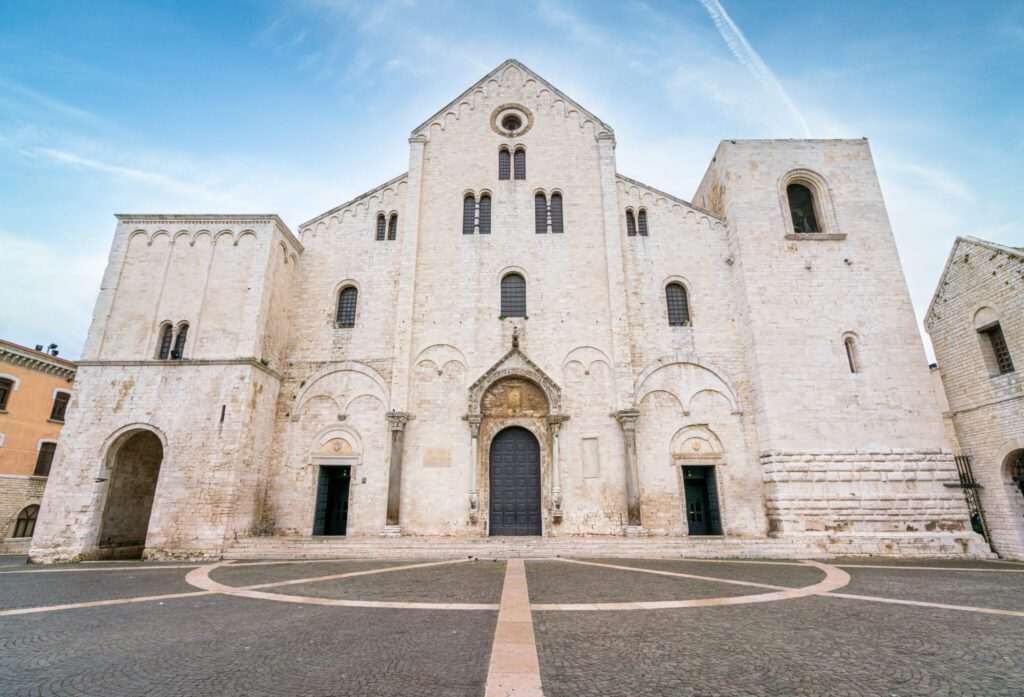
December 6th – The city of Bari in the region of Puglia celebrates the life and times of Saint Nicola like no other city in Italy. Saint Nicola, also known as Saint Nicholas, is the patron saint of Bari. Sailors from the seaside city stole relics of the saint from his resting place Muslim controlled Myra in the year 1087. In 2017 the city celebrated a 930-year-old anniversary of the Festa di San Nicola.
Each year thousands of pilgrims from around the world travel to Bari to give thanks to the saint and worship beside the tomb. Children love the Feast Day of Saint Nicola, as it falls during the Advent season during which children fill their days with the anticipation of Christmas. In the evening, children leave their shoes overnight in front of fireplaces, windowsills, or outside of their bedrooms waiting for the saint to visit. In the morning they find Saint Nicola has left special fruits, candies, or small gifts as treats for their good behavior.
The tradition grew out of the legend of the saint throwing bags of dowry money down chimneys or through windows to help impoverished families from selling their daughters into slavery. In the spirit of custom and protection, women eager to marry continue to visit the basilica on the patronal feast day to place notes written to the saint and three coins inside a special box.
Feast Day for Saint Ambrose
December 7th – The city of Milan in the Lombardy region enjoys the rich and storied life of Saint Ambrose during the patronal feast day. Aurelius Ambrosius was born in the 4th century in Gaul. He became a lawyer and governor of Milan before becoming the city’s bishop in the year 374. The saint also worked in scholarly pursuit before denying the emperor Theodosius I from entering the church after massacring 7,000 people in Thessalonica.
A special religious service is held on the feast day in one of the oldest churches in the the city, Basilica of Sant’Ambrogio, which was erected in the 1099. The Oh Bej! Oh Bej! Street market is the traditional Christmas fair established in the Sforza Castle beginning on the Feast Day for Saint Aborse. The market was located in Piazza Mercanti until the mid 1880s before moving to the Basilica di Sant’Ambrogio, and finally to the classic castle grounds. Seasonal sweets and winter delicacies decorate the stalls alongside Christmas decorations, toys, antiques, and souvenirs.
Wild Boar Festival
End of November to December 8th – Wild boar has been a delicacy in the region of Tuscany for centuries, and the medieval town of Suvereto continues to uphold the tradition with an annual 10-day festival. The isolated coastal town maintains a tranquil ambiance throughout the year, erupting with culinary delights and drawing in large crowds respective to the size of the town. Vendors showcase locally produced specialties, such as wine, olive oil, honey, and handmade pasta. Restaurants and cafes follow the theme of the festival by crafting delectable dishes focusing on the main ingredient, boar.
The celebration surpasses the gastronomic customs of the region and also rejoices in medieval history with exhibitions, reenactments, and fanciful competitions. The secluded province provides an escape from the crowds and popular destinations of Italy, while offering an immersive cultural festival in views of pine forests and rock coastline.
Immaculate Conception (L’Immacolata Concezione)
December 8th – Children and adults alike in Italy began the countdown to Christmas on the L’Immocalata, the Feast of the Immaculate Conception. The national holiday observes the conception of Mary, daughter of Anne and mother of Jesus with a large festival. The tradition began in the 7th century when churches celebrated the Feast of the Conception of Satin Anne, the mother of Mary. In the 19th century Pope Pius IX decreed Mary was free of original sin from her conception rather than baptism.
Morning mass celebrates this moment and the special meaning in which the conception gives to humanity and the divine. Celebrations in Rome consist of laying floral wreaths on the nearly 40-tall column of the Immaculate Conception stands in Piazza di Mignanelli, an extension of the Piazza di Spagna. The Pope and the mayor of Rome attend the ceremony and lay wreaths at the base of the column. The Italian Fire Brigade places a large flora garland on the arm of the bronze statue. Parades dedicated to the saint fill the streets of the cities large and small. In the Abruzzo region, churches and local governments provide bonfires for the community.
In Francavilla, a town also located in Abruzzo, citizens sing customary songs and perform traditional dances dedicated to the Madonna while enjoying prayers and bonfires. Cooks prepare fried sweets and savory dishes including snails, cabbage, and seasonal vegetables. The most notable places in which to participate in local customs and lavish traditions are Rome, Trento, and the Vatican.
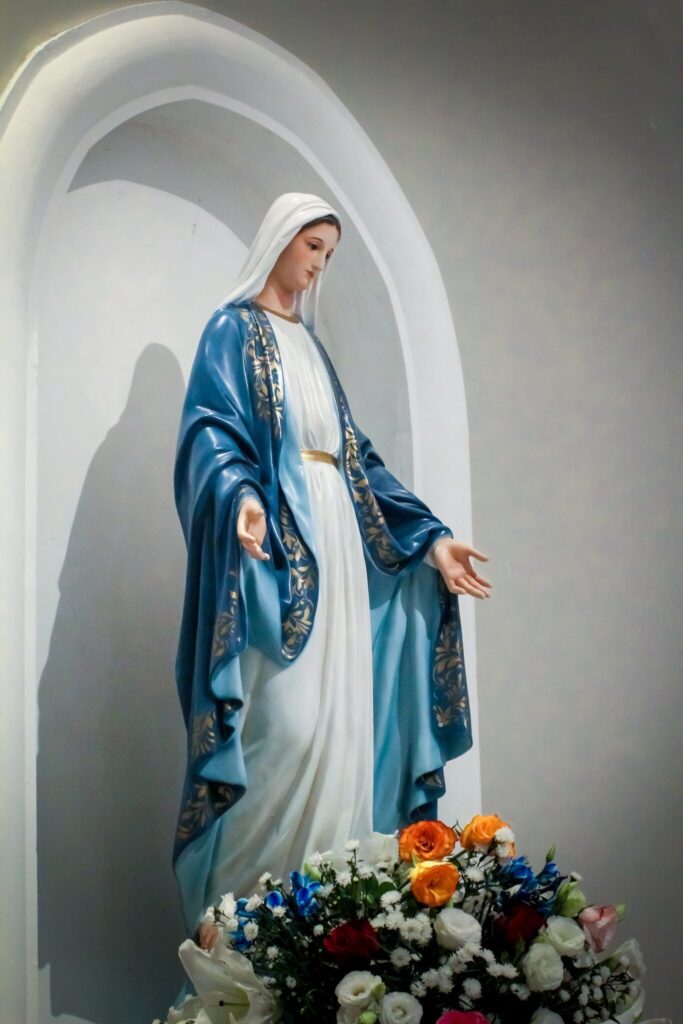
Saint Stephen’s Day (Santo Stefano)
December 26th – The family continues to celebrate the Christmas Season the day after Christmas during Saint Stephen’s Day. Families traditionally come together one last time to commemorate the holiday by dining on holiday leftovers and an abundance of sweets. Many Italians across the country visit the nativity scenes decorating their respective towns and cities. Markets and festivals continue to fill public piazzas. The holiday commemorates Saint Stephen, who was stoned to death in the 1st century, becoming the first Christian martyr.
Each town in Italy has its own unique way of celebrating the holiday. The saint’s relics were moved to Putignano, a town in Puglia in the province of Bari. The town continues to celebrate the holiday with poetry recitations in their local dialect in honor of the original mass that took place in the late 14th century. The mountain town of Fara San Martino in the region of Abruzzo gathers locals in the main piazza for a live reenactment of the nativity. The province of Padua in the Veneto region has more than 300 participants reenact a single story from the Bible.
Thousands of people travel to the city of Ragusa in Sicily to attend the annual presepe vivente, where approximately 40 different scenarios form the nativity scenes held in the eight-mile-long Parco Foraza Gorge. Artisan craftsmen also provide demonstrations of their trade with rope making, woodcutting, making soap, or crafting olive oil among them.
Christmas Day (Natale)
December 25th – Christmas in Italy is a family holiday, with little public fanfare but mostly private celebrations to enjoy with close relatives or friends. The holiday is one of the largest holidays in Italy, but most of the traditions and customs take place inside the home as opposed to in the public piazzas and open streets. Lights dangle from evergreen trees in the larger squares but the main decoration of any town or city focuses on the nativity scenes. Shop windows or small sections in front of historic churches display the nativity in various forms, including life-size representations.
Naples provides a perfect example of a world-famous production of the nativity with figurines and displays, leading to Via San Gregorio Armeno, a street informally known as “Christmas Alley.” Seasonal markets abound in the weeks leading up to the holiday and continue until the Epiphany on January 6th. German markets in the northern regions provide particular flavor and aromas to the cities around the Swiss and Austrian borders.
Southern cities maintain a more Mediterranean character. Babbo Natale represents an Italian Santa Claus but does not bring gifts to the boys and girls of the nation. The season brings special dishes, including the sweet cakes of panettone and pan d’oro. Dinner on Christmas Eve consists of fish instead of meat, while the meal on Christmas Day focuses on meat.
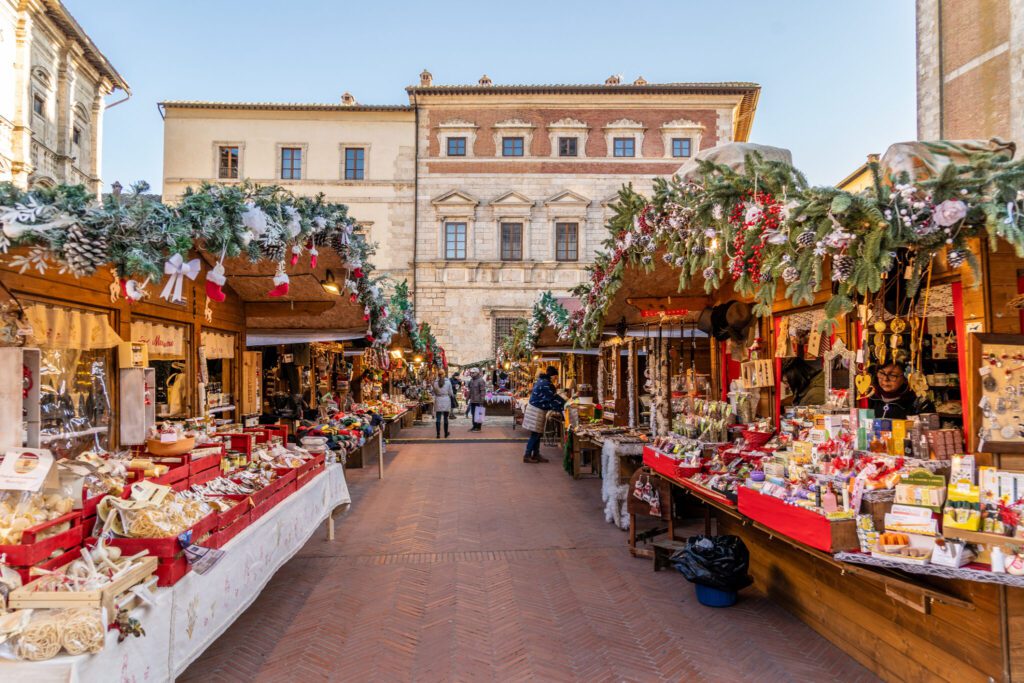
Experience the Right Festival during Your Workation
Italy is a country that inspires excitement, promising authentic culture and genuine experiences. Connect to the people and with your surroundings when enjoying a traditional Italian festival during your Italy Workation for a celebration unlike anywhere else in the world. Whether you stay for one week or one month, learn how the different occasions can affect your Workation to maximize your work-life balance.
Navigate the information you need and want for your best Workation package before we help your accelerate your productivity and immerse you in an unforgettable experience. Take one step closer to planning your Workation or find more information about the The Differences of Italy’s Regions.

